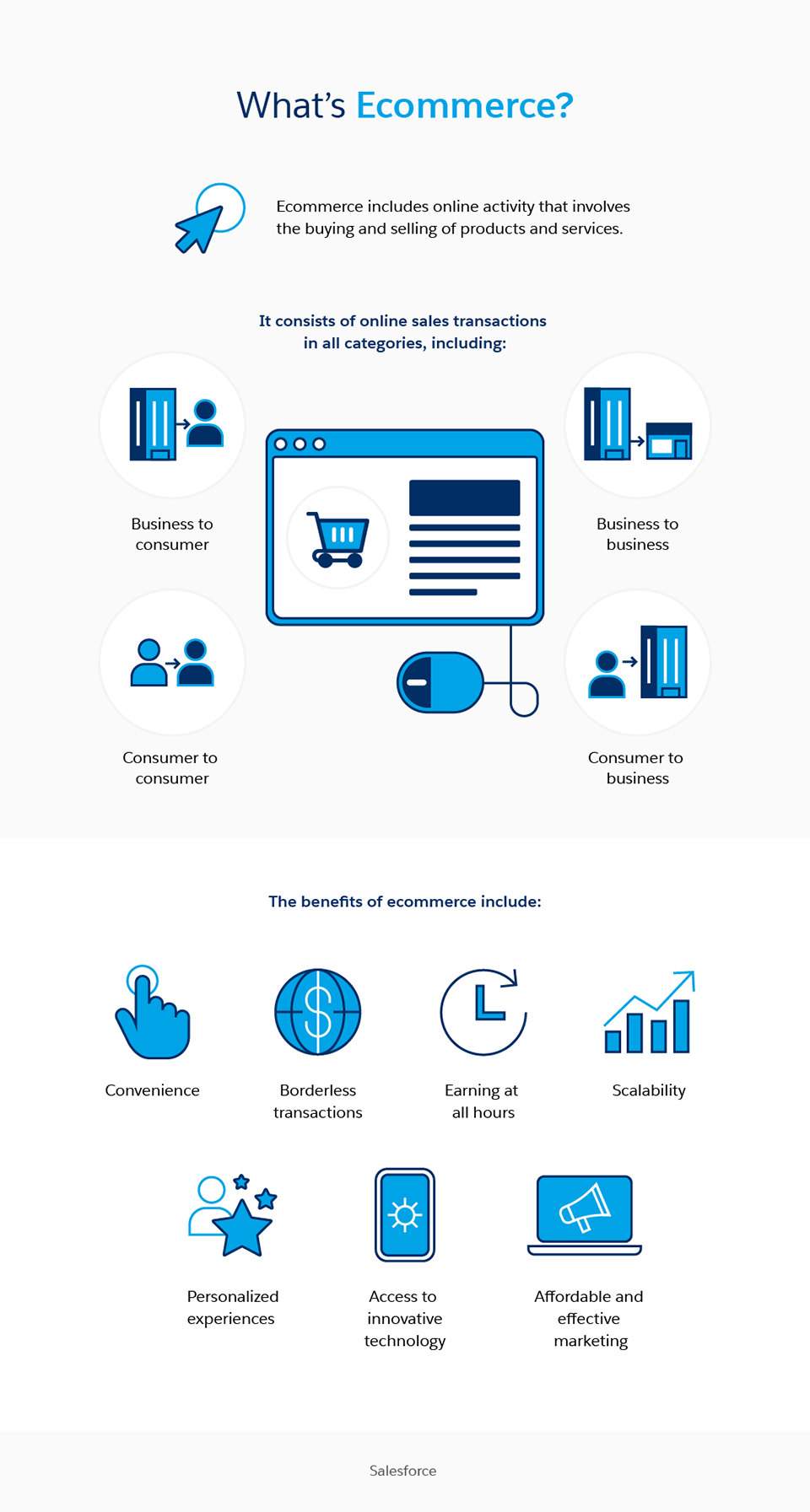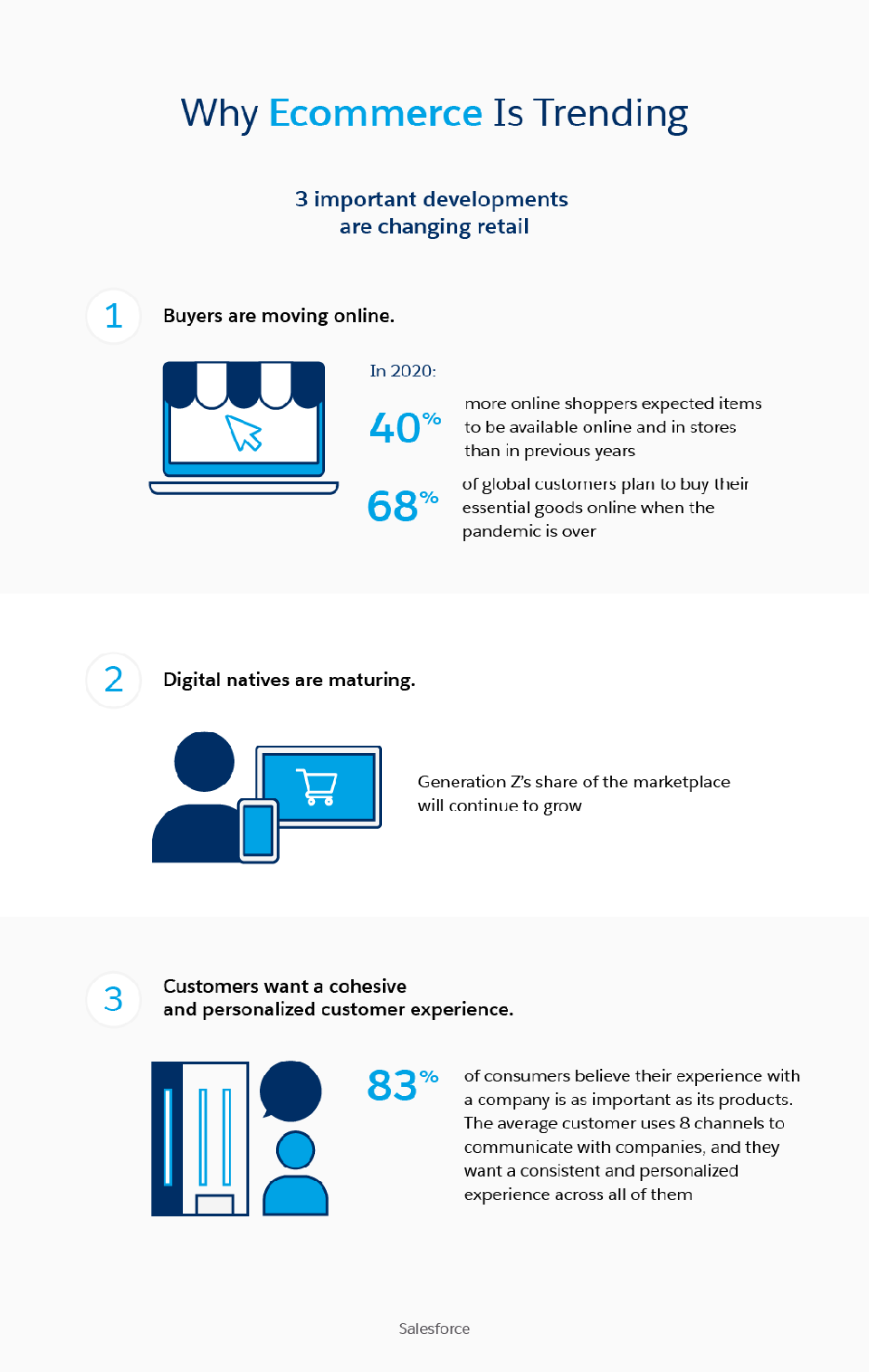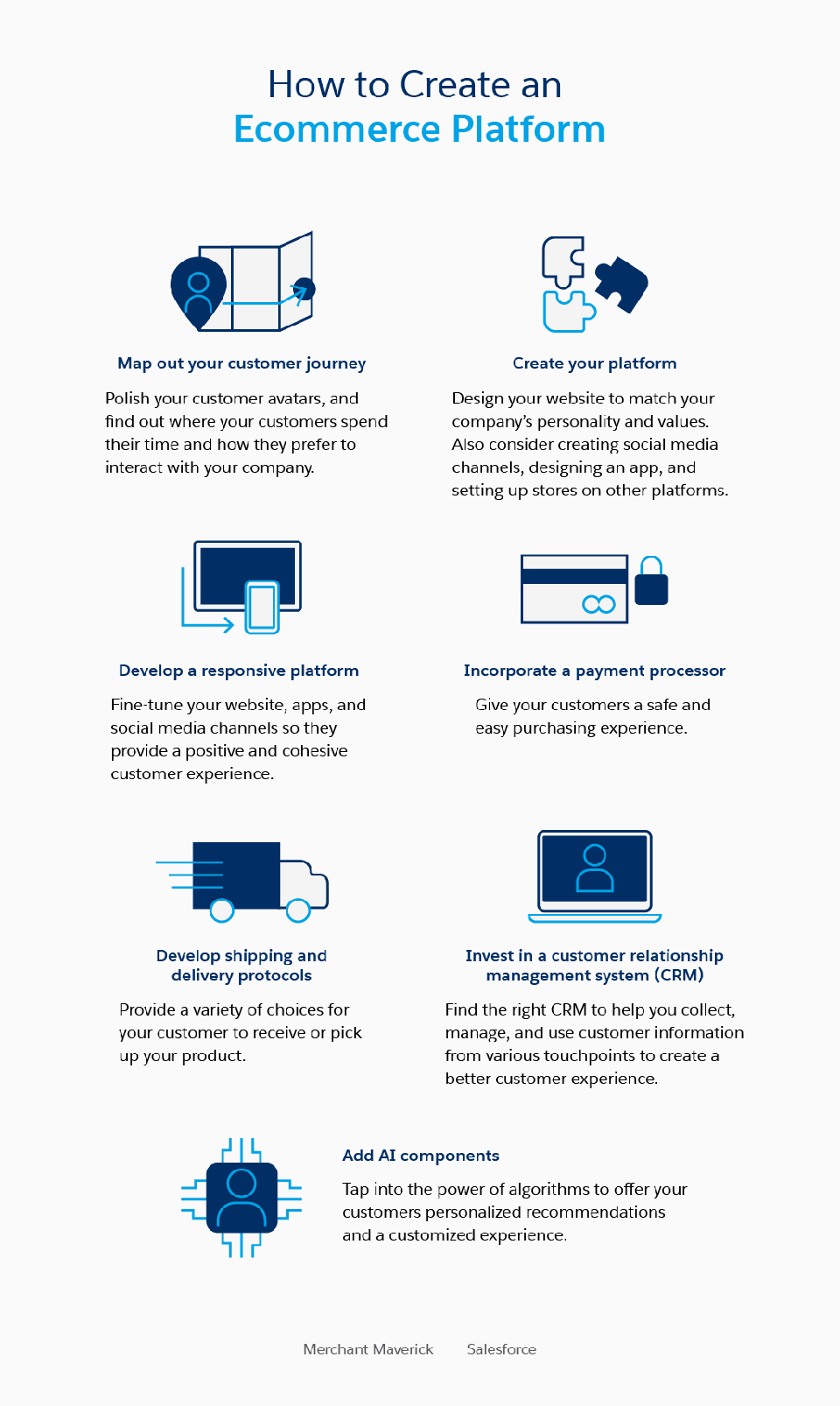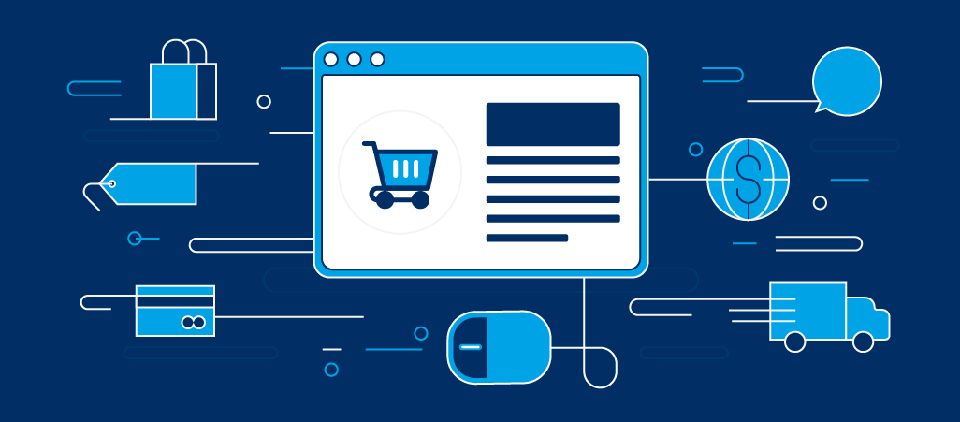As a business owner, you already know a website is a critical way to engage current and potential customers. Moreover, a simple landing page with the address and phone number of your brick-and-mortar store is no longer enough. According to Salesforce’s research report State of the Connected Customer, “Customer expectations and behaviours have shifted radically, rapidly, and permanently; as our physical world has shrunk, the digital imperative companies have contended with for decades has reached an abrupt tipping.”
In 2020, the pandemic dramatically shifted customer behaviour toward staying home and shopping online. Does this mean brick-and-mortar stores will go away? Not at all. Instead, today’s top business leaders recognize the value in merging ecommerce with brick-and-mortar retail into a single, holistic customer experience. In the multi-channel retail environment, customers can forge their buyer’s journey.
What Is Ecommerce?
The term ecommerce can feel nebulous. Is it a website or something more? According to Investopedia, electronic commerce, or ecommerce, is “a business model that lets firms and individuals buy and sell things over the internet.”
Ecommerce describes online purchasing in its many forms:
Business to consumer
Business to business
Consumer to consumer
- Consumer to business

Chances are you participate in ecommerce regularly. Did you buy something on Amazon recently? Do you use a delivery app on your phone to order takeout? Have you scrolled through Facebook Marketplace to find a new exercise bike for the family room?
Then you’ve engaged in ecommerce as a consumer. These simplistic examples, however, don’t express the depth of what ecommerce can represent. In today’s online marketplace, ecommerce is part of a growing movement to provide personalized journeys for every consumer.
With the help of responsive websites, CRMs, apps, and AI programs, businesses at the forefront of ecommerce can learn more than ever about their customers and create a customized buyer’s journey, which may or may not incorporate a trip to a brick-and-mortar store.
Keep reading to learn which trends are helping ecommerce grow, and why it’s more imperative than ever for retailers and brick-and-mortar store owners to overhaul their online presence.
Why Retailers Need to Get Serious About Ecommerce
Today’s consumers don’t just expect choices when it comes to where and how to buy; they demand it. Businesses that want to stay relevant need to give consumers what they want, which means meeting them where they are – online and offline. Here are some of the most important trends that continue to bring ecommerce to the forefront of our global retail world.
Buying continues to migrate online
The pandemic didn’t create the online buying trend, but it dramatically accelerated the shift in buying behaviour. According to the Salesforce report Consumer Goods and the Battle for B2B and B2C Relationships, “the global health crisis has led to an explosion in e-commerce and accelerated the need for transformation.” In 2020, 40 per cent more online shoppers expected items to be available online and in stores than in previous years, according to the report. Additionally, in the Connected Shoppers Report, Salesforce found that 68 per cent of global customers plan to buy their essential goods online when the health crisis is over.
The rise of digital natives
Gen Z is coming! Though Baby Boomers are getting into the swing of online purchasing, the digital natives in the Millennial and Generation Z cohorts are most likely to turn to their computers, tablets, and phones first for their next purchase. These populations are coming into their prime purchasing years and are fluent in the connected world. “Digital-first behaviour is here to stay as customers develop new habits that will last for the long term,” according to State of the Connected Customer. “As digital engagement grows, customers expect companies to digitize their operations for multi-channel, high-touch interactions.” As Generation Z matures, their share of the market and the power of their preferences will only grow.

The expectation of a personal buyer’s journey
Today’s customers want choices as well as cohesive and consistent experiences across platforms. According to the Connected Shoppers Report, the average customer uses eight different channels to communicate with companies.
Companies need to show up on platforms customers use and make the customer experience seamless, no matter where a customer shops. The vast majority (83 per cent) of consumers believe their experience with a company is as important as its products, according to State of the Connected Customer.
Additionally, ecommerce allows companies to gather and use information from their customers to provide personalized experiences. Customers notice and respond to personalized recommendations. According to Connected Shoppers Report, consumers note that the number one trait of the brands they love is “caters to my unique needs.” Number four is “engages me in the places I prefer,” and number five is “truly understands who I am.”
Clearly, ecommerce is more important than ever, but how do you create an ecommerce platform for your business?
How to Create an Ecommerce Platform
In a quickly changing world, your business must continually adapt. That means merging your offline and online business and ensuring your customers can get a great experience wherever they find you. Here’s how to create or improve your ecommerce platform.
Map out your customer journey
Revising your existing web presence or creating a new ecommerce platform is an excellent opportunity to step back and polish your customer avatars and to map their customer journeys. Figure out who your ideal customers are, where they spend time, and how they prefer to interact with your company.
Create your platform(s)
Depending on your business, budget, needs, and personal preference, you may wish to hire a team to develop a unique ecommerce platform for you. Small and medium-sized businesses may prefer to use an existing ecommerce platform.
Choose your template carefully and design your site to match your company’s personality and values. You’re not done yet. Think about how else you can expand your influence. You may want to create social media channels, design an app, or set up stores on other platforms, such as Etsy or Amazon.

Develop a responsive platform
Your customers expect a great experience, whether they use a website, an app, or a home personal assistant device. A majority (55 per cent) of shoppers have already purchased a product on an app, according to the Connected Shoppers Report.
Make sure your platform provides a great customer experience wherever your customers find you.
Incorporate a payment processor
You’re going to need a payment processor to accept payments. Research the most popular payment processors and ensure that you can give your customers a safe and easy purchase experience.
Develop shipping and delivery protocols
How are you going to get your products to your customers? The more choices you can provide, the more your customers will appreciate your efforts. You may wish to use a fulfillment centre, offer deliveries from your brick-and-mortar store, or allow customers to pick up their order from your store to save on shipping costs.
Invest in a CRM
How are you going to merge all your data files from your website, app, social media channels, in-store purchases, and sales team? The answer is a customer relationship management system (CRM) such as the CRM Starter Pack. The right CRM can allow you to collect, manage, and use customer information from various touchpoints. Use your CRM to create personalized email campaigns, offer promotions to customers who haven’t purchased in a while, or send follow-ups to customers who abandoned a purchase in their cart. The right CRM will allow you to seamlessly use the customer data you collect to give every customer a better experience.
Add AI components to your ecommerce platform
The growing power of artificial intelligence (AI) systems is helping bring personalization to a whole new level. An AI system can make endless connections related to a customer’s behaviour to offer them a completely customized experience. Have you ever wondered how Amazon makes such good recommendations or how Facebook decides which posts appear in your feed? AI can process an endless amount of information and help you treat each customer like the unique individual they are.
Less than 40 per cent of business leaders surveyed in the report Consumer Experience in the Retail Renaissance use AI to personalize content across all channels, which means you can lead if you take the leap.
A Business Wave You Can’t Afford to Miss
The trend is clear. Ecommerce is on the rise. Digital natives expect a consistent and personalized shopping journey across multiple platforms. Businesses have no choice but to keep up or stumble in the dust. You need to invest in your ecommerce platform and revise and update your platform to embrace the growing complexity of the consumer market.
Brick-and-mortar stores aren’t necessarily on their way out. Instead, physical locations are one channel consumers can use to find the products and brands they love. It’s time to embrace the future. Dump your old informational website and build your ecommerce empire.


